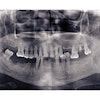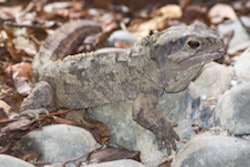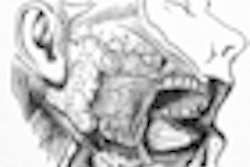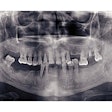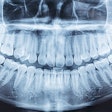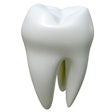Diet and genetics dictate the shape of the mandible, according to a study by researchers at the Johns Hopkins Center for Functional Anatomy and Evolution (American Journal of Gastroenterology, June 23, 2011).
The findings may be used to predict the diet of ancient population and can also make it easier for scientists to pinpoint the genetic relationship between fossils.
"Our research aimed to see how much of the mandible's shape is plastic, a response to environmental influences, such as diet, and how much is genetic," said Megan Holmes, a graduate student and lead author of the study. "Before we can make inferences about what the shape of a bone tells us, like what environment the individual lived in, who it's related to or what it ate, we have to understand what creates that shape."
The study evaluated the Arikara and Point Hope American Indians, two populations that were genetically isolated from other groups and ate different diets. Holmes and her team investigated bones from the regions dating back to the 1600s and 1700s, times for which the diets are known from other records.
The Point Hope population in Alaska ate a "hard" diet that included tough dried meat. They also used their teeth for various nonfood-related tasks, such as stripping leather. The Arikara, from the Dakota area of the U.S., ate a softer diet that consisted of farming supplemented with light hunting.
The researchers measured mandibles from 63 members of the Point Hope population and 42 individuals from the Arikara population and used those measurements to extrapolate the proportions of the entire jaw.
"The mandibles were similar in children before they were old enough to start chewing but different in adulthood, which implies that this divergence is likely a functional result of their diet and the use of their jaw, rather than genetics," Holmes said.
The changes to the mandibles were explained using a theory drawn from engineering, which directly relates the geometry of a bone to the stresses put on it during use. The team was able to investigate very specific parts of the mandibles and relate them to specific dietary habits.
"Genetics creates a blueprint of the bone, but a lot of things influence the bone's construction," Holmes said. "Mechanical pressure from muscle stress and strain from day-to-day activities can remodel the bone's surface and internal structure. Knowing how much the shape of a mandible is related to diet and how much genetically connects it to fossils found elsewhere can really help us parse out the family tree."


